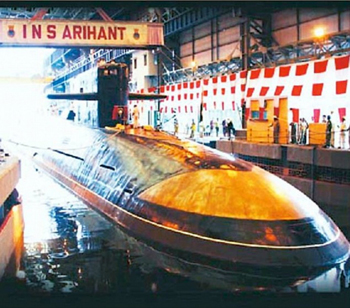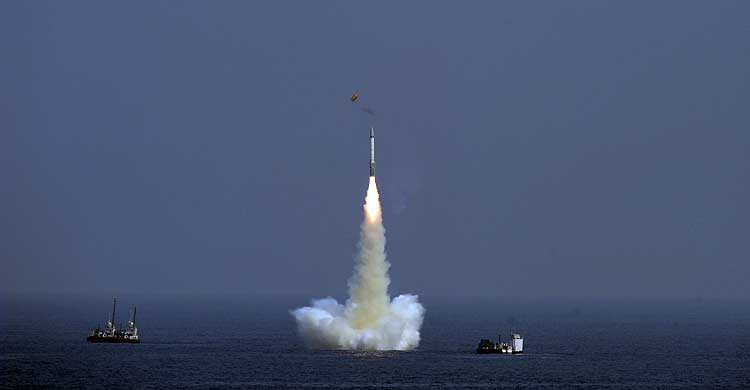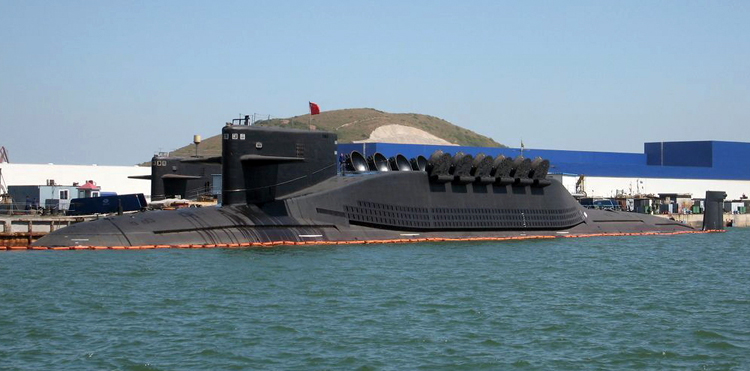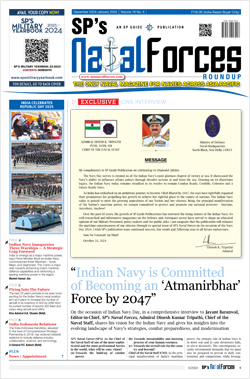INDIAN ARMED FORCES CHIEFS ON OUR RELENTLESS AND FOCUSED PUBLISHING EFFORTS

The insightful articles, inspiring narrations and analytical perspectives presented by the Editorial Team, establish an alluring connect with the reader. My compliments and best wishes to SP Guide Publications.

"Over the past 60 years, the growth of SP Guide Publications has mirrored the rising stature of Indian Navy. Its well-researched and informative magazines on Defence and Aerospace sector have served to shape an educated opinion of our military personnel, policy makers and the public alike. I wish SP's Publication team continued success, fair winds and following seas in all future endeavour!"

Since, its inception in 1964, SP Guide Publications has consistently demonstrated commitment to high-quality journalism in the aerospace and defence sectors, earning a well-deserved reputation as Asia's largest media house in this domain. I wish SP Guide Publications continued success in its pursuit of excellence.
Indian Navy's Quest for Nuclear Submarines
India's focus on nuclear submarines has intensified, especially after the end of the Russian Akula class submarine lease in 2021, leaving the Indian Navy without an SSN (nuclear attack submarine) in its fleet
 |
The Author is Former Director General of Information Systems and A Special Forces Veteran, Indian Army |

According to recent reports in the media, INS 'Arighat' is to be commissioned into the Indian Navy before October 2024 after extensive trials and upgrades. INS 'Arighat' is an upgraded variant of INS 'Arihant'. Codenamed S3, Arighat is the second nuclear powered ballistic missile submarine being built in India under the Advanced Technology Vessel (ATV) project to build nuclear submarines at the Ship Building Centre (SBC) in Visakhapatnam.
Arighat was outfitted in December 2010 and with successive postponement of launch dates, the vessel was finally launched on October 18. 2017. Subsequent media reports of 2022 indicated that INS 'Arighat' was undergoing harbour trials and was slated to be commissioned in 2022. Sea trials of the submarine have since been completed. However, no official date has been announced for commissioning of the submarine into the Indian Navy.
INS Arighat is an upgraded variant of INS Arihant and is set to be commissioned into the Indian Navy before October 2024 after extensive trials and upgrades
General characteristics of INS 'Arighat' include the following:
- Class – Arihant class;
- Type – ballistic missile submarine;
- Displacement – 6,000 tonnes;
- Length – 111.6 metres; Beam – 11 metres; Draft – 9.5 metres;
- Installed Power – 1 x CLWR-B1 Compact Light-water reactor, 83 MW;
- Propulsion – 1 x propeller shaft, nuclear propulsion;
- Surface Speed – 12-15 knots (22-28 km/h); Submerged Speed – 24 knots (44 km/h);
- Endurance – unlimited except by food supply and maintenance;
- Test Depth – between 300 metres 400 metres;
- Sensors and Processing Systems – USHUS sonar, Panchendriya unified submarine sonar, control system and underwater communication system;
- Armament – 12 x K-15 SLBM (750 km range) or 4 x K-4 SLBM (3,500 km range), torpedoes 6 x 21 (533mm), torpedo tubes – est 30 charges (torpedoes, missiles or mines).
INS 'Arighat' will have one seven-blade propeller powered by a pressurised water reactor. It can achieve a maximum speed of 12–15 knots (22–28 km/h) when on surface and 24 knots (44 km/h) when submerged. The submarine has four launch tubes in its hump, just like its predecessor. It can carry up to 12 K-15 Sagarika missiles (each with a range of 750 km or 470 mi), or four of the under-development K-4 missiles (with a range of 3,500 km or 2,200 mi). India awaits the commissioning of INS 'Arighat' SSBN (nuclear-propelled submarines with nuclear-tipped ballistic missiles) and joining INS 'Arihant', which became fully operational in 2018.
China's submarine fleet, consisting of over 70 submarines including nuclear ballistic missile submarines (SSBNs) and nuclear attack submarines (SSNs), poses a growing challenge in the Indian Ocean, prompting India to bolster its own submarine capabilities
Concurrently, media reports of August 11, 2024 state that India's 65,000-tonne second Indigenous Aircraft Carrier (IAC-2) has taken a backseat because of the Indian Navy's preference for nuclear submarines. After the lease of the Russian Akula class nuclear-powered submarine ended in 2021 and the Ukraine war delayed the lease of another submarine of the same class, the Indian Navy was left with no SSN in its fleet. After getting in-principle approval from the Indian government in 2015, the Navy is now approaching the government to build nuclear-powered conventionally armed submarines.

China's submarine fleet consists of more than 70 submarines, including seven nuclear ballistic missile submarines (SSBN), 12 nuclear attack submarines (SSN), and more than 50 diesel attack submarines (SSKs). In contrast, most of India's conventional submarine fleet was acquired in the 1980s and is getting old. Since 2017, Chinese submarines and hydrographic ships have been regularly deployed in the Indian Ocean. Their increasing presence will facilitate future deployment of Chinese SSBNs and SSNs in the Indian Ocean.
Development of INS Arihant and INS Arighat with Russian assistance has enabled India to miniaturise nuclear reactors for submarines, though the first indigenous SSN is expected to be combat-ready only by 2040
SSNs are game changers. They are powerful platforms with stealth and unlimited endurance. They can remain underwater indefinitely and operate far away from the port for long periods and at high speeds. They can move along as part of the carrier battle group. Armed with long-range missiles, they can change the shape of maritime battle.
The SSN has greater reach, endurance, and speed than the slow and short-legged diesel submarine. It can remain submerged for months, as compared to hours or days for the diesel engine-cum-battery propelled conventional boats, even one with Air-Independent Propulsion (AIP).
Once it dives into deep waters, the SSN is not only difficult to detect but has (unlike the diesel sub) enough speed to overtake or outrun most other submarines or warships if required. The classic roles of an SSN are to protect carrier battle groups and to hunt enemy SSBNs, but it is also an ideal platform for the anti-ship, land-attack, and surveillance roles.

Development of INS Arihant and INS Arighat (powered by an 83 MW reactor manufactured by BARC) with Russian help has given India the expertise to miniaturise the nuclear reactor to fit into a submarine. However, according to analysts it will take another 10-15 years before the first indigenous SSN becomes combat-worthy "after" the government approves the project. This means the first indigenous SSN will get commissioned into the Indian Navy by 2040 or so. Ironically, India should have taken such a decision decades back. China gave preference to build its submarine fleet much before it started building aircraft carriers.
India's strategic need for both the Indigenous Aircraft Carrier (IAC-2) and SSNs highlights the ongoing debate over defense spending, balancing between economic constraints and security requirements
At the same time, comparing aircraft carriers with SSNs is not an apt comparison as each is a potent war-fighting platform in its own way. For a Blue Water Navy, aircraft carriers and SSNs complement each other. India must have two operational aircraft carriers at all times, catering for maintenance and accidents, which means the Navy needs a third aircraft carrier. To this end, India needs both the IAC-2 (INS 'Vishal') and SSNs, but it is a question of how much is spent on defence, which the government apparently considers low priority in its inability to strike the right balance between economy and security.
The Pakistan Navy is also exploring the option of having sea-based deterrence by equipping its under-construction Chinese submarines with nuclear-tipped missiles. At the same time, India is also advancing its submarine-launched ballistic missile (SLBM) programme, with ongoing development of missiles like the K-4, which has a range of 3,500 km.





